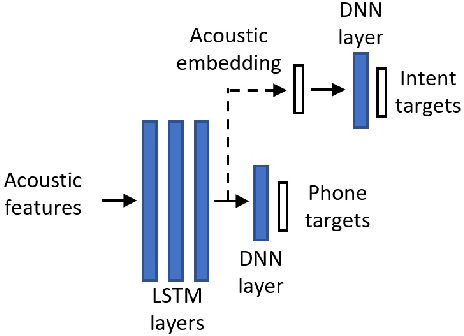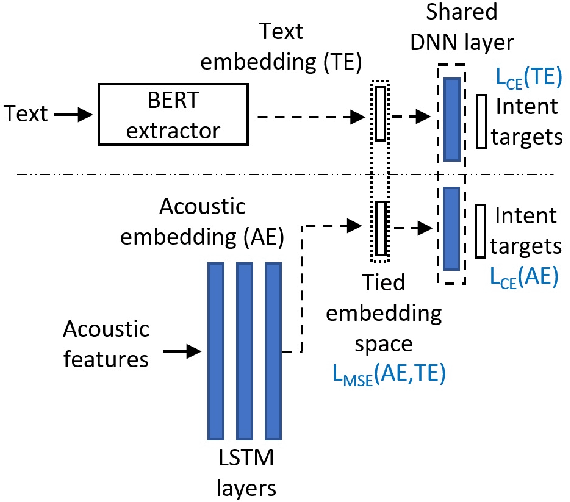Leveraging Unpaired Text Data for Training End-to-End Speech-to-Intent Systems
Paper and Code
Oct 08, 2020



Training an end-to-end (E2E) neural network speech-to-intent (S2I) system that directly extracts intents from speech requires large amounts of intent-labeled speech data, which is time consuming and expensive to collect. Initializing the S2I model with an ASR model trained on copious speech data can alleviate data sparsity. In this paper, we attempt to leverage NLU text resources. We implemented a CTC-based S2I system that matches the performance of a state-of-the-art, traditional cascaded SLU system. We performed controlled experiments with varying amounts of speech and text training data. When only a tenth of the original data is available, intent classification accuracy degrades by 7.6% absolute. Assuming we have additional text-to-intent data (without speech) available, we investigated two techniques to improve the S2I system: (1) transfer learning, in which acoustic embeddings for intent classification are tied to fine-tuned BERT text embeddings; and (2) data augmentation, in which the text-to-intent data is converted into speech-to-intent data using a multi-speaker text-to-speech system. The proposed approaches recover 80% of performance lost due to using limited intent-labeled speech.
 Add to Chrome
Add to Chrome Add to Firefox
Add to Firefox Add to Edge
Add to Edge